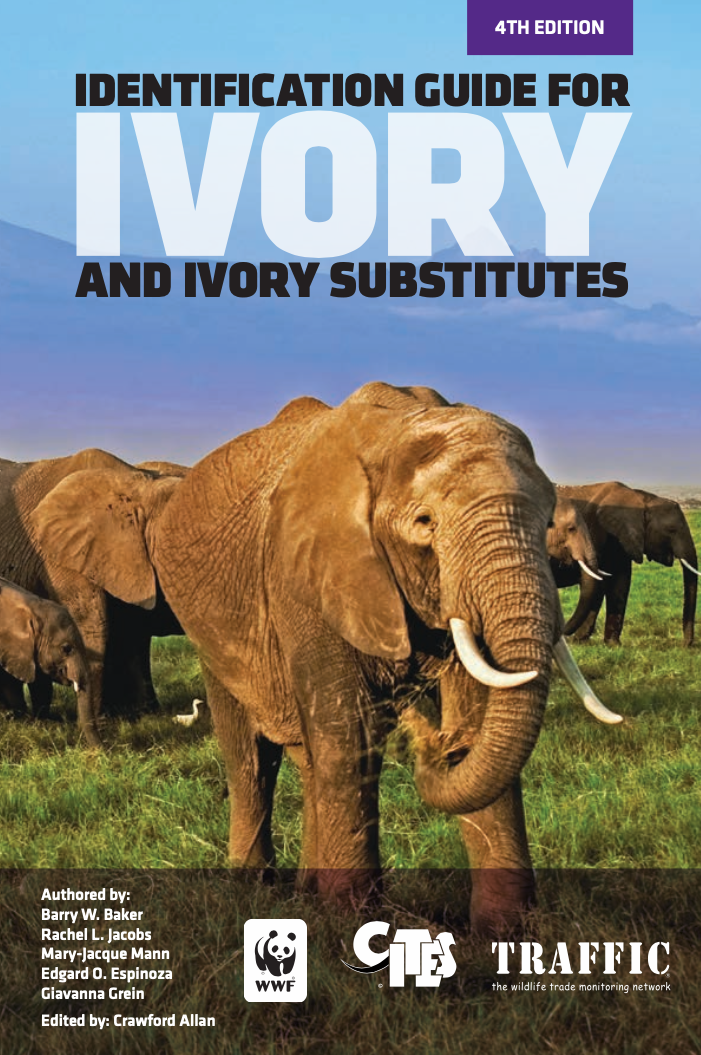Identification guide for Ivory and Ivory substitutes 2020 Published Popular
IDENTIFCATION GUIDE FOR IVORY AND IVORY SUBSTITUTES -2020.pdf
By admin In Documents 1040 downloads
Download (pdf, 5.29 MB)
Identification of different types of ivory, and of objects and products made of materials that imitate or look like ivory, is the main scope of this identification guide. It responds to Decision 17.162 adopted at the Seventeenth meeting of the CITES Conference of the Parties (Johannesburg, 2016), whereby Parties requested the Secretariat to prepare a revised and updated version of the Identification Guide for Ivory and Ivory Substitutes, taking into account modern identification methods. Considering that the third edition of the Guide was published in 1999, we are pleased that significant progress can be found in the present edition – both in the science and in the visual presentation of the publication.
CITES regulates more than 36,000 species of animals and plants. Parties are expected to implement the Convention for all listed species, which means that administrators, scientists, and enforcement officers must be able to differentiate the many species and their products. Establishing the identity of the specimen is one of the first pieces of information that Parties need to be able to regulate international trade in accordance with the Convention.
Identification of different types of ivory, and of objects and products made of materials that imitate or look like ivory, is the main scope of this identification guide. It responds to Decision 17.162 adopted at the Seventeenth meeting of the CITES Conference of the Parties (Johannesburg, 2016), whereby Parties requested the Secretariat to prepare a revised and updated version of the Identification Guide for Ivory and Ivory Substitutes, taking into account modern identification methods. Considering that the third edition of the Guide was published in 1999, we are pleased that significant progress can be found in the present edition – both in the science and in the visual presentation of the publication.
